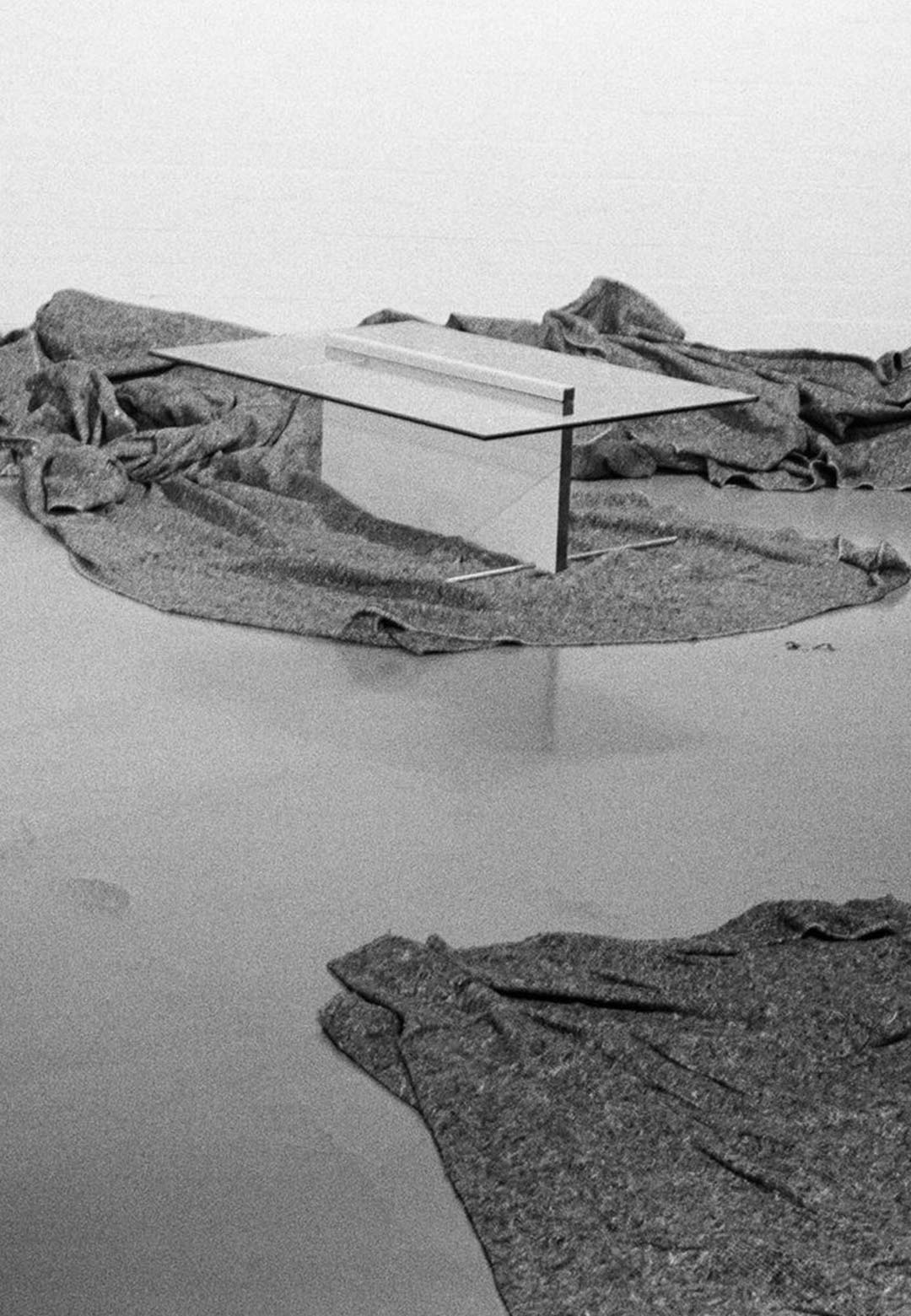In the measured lexicon of form and function, where objects become vessels of introspection, London-based furniture and object designer Amelia Stevens' newest collection titled Species of Tables and Other Pieces sits clean, sincere and confident. Here, Stevens attempts to imbue her series 'comprised of [three] pieces and with endless possibilities', with the same annotations that animated French novelist Georges Perec's influential Species of Spaces and Other Pieces (1974) novel. "I have been an admirer of Georges Perec's writing for some time now. As a member of the French literary group Ouvroir de Littérature Potentielle (Oulipo), there is both a rigidness and humour to his work that I am particularly fond of and that, I hope, can also be found in my own work," the designer tells STIR.
This duality, a strict formalism tempered by a knowing wit, permeates her furniture designs, pure compositions of planes and surfaces, while challenging and expanding the notion of a table in its structural, aesthetic and conceptual manifestations. "While [my] previous collections have referenced the works of other 20th century writers such as Robert Musil, the slender verticality and horizontal floating glass panels of [this collection] are a direct reference to the formal structure of Perec's 1974 poem Species of Spaces. Likewise, the different categories of tables explored through this collection and its endless bespoke possibilities are a conceptual reference to the polysemy of the word 'space' used throughout Perec's poem (e.g. outer space, three-dimensional space, available space)," she elaborates.
Stevens' fascination with Perec's work is neither incidental nor a pretentious homage. Rather, it is a deeply felt alignment with the author's rigorous yet wry explorations of constraint, repetition and reconfiguration. Her ultra-minimalist collection consists of a pair of side tables and a low table, each rigorously adhering to a distilled material palette of 316 stainless steel, Sapele hardwood and/ or toughened glass, and unified in their language of balance and sleek material interplay—a reverent dialogue between structure and semantics.
"My design philosophy focuses on the use of high-quality materials and craftsmanship to create pieces with the outward expression of simplicity that I hope can be thought of or regarded as beautiful, special to own even, imploring clients to take care of them," Stevens explains.
From the collection, Species of Table and Other Pieces — Side (Stainless Steel) finds its improbable balance through a sleek 18 kilogram stainless steel base that counters its delicate visuals. A removable, hand-spun stainless steel dish intersects a floating glass panel midway. The object is open to reinterpretation in its use—"…intended as a personal drinks stand, its slender upright base and floating glass panel inset with removable hand-spun stainless steel dish can be used for a serving of olives, as an informal ashtray, or however one wishes to imagine," as Stevens describes. The sculptural design's corresponding version, realised in Sapele hardwood and juxtaposed with a white-painted finish and lacquered edges, is a subtle nod to Irish designer Eileen Gray's modernist designs.
Meanwhile, a more expansive plane for interaction, Species of Table — Low gestures toward intimacy and display. Its broad surface serves perhaps as a tableau for collected objects or a site of quiet contemplation, transforming the notion of a table as an open-ended proposition. Stevens even discusses the potential adaptation of this low table in stainless steel for a private client, "a substantial piece that, if realised, would weigh [over] 80 kilograms".
In Stevens' work, weight is more than a measure of mass—it is a statement of intent. Her art sculptures, though visually restrained, carry an undeniable physical presence anchoring them in a realm increasingly defined by the ephemeral. "The emphasis on physical weight in my work is twofold. On the one hand, it is a way of signalling the significance of my pieces, their intended permanence and departure from the throwaway culture of today…On the other hand, it introduces a playful element," the furniture designer notes. The deliberate heft of materials challenges perception, inviting a tactile engagement that lingers beyond the first glance. "When these stainless steel pieces are on display, I often see handprints where people have tried to pick them up—it always makes me smile," she admits.
In pursuit of 'beauty as a function of longevity', the product designer crafts each table with replaceable components and minimal design interventions in the core materials, allowing for seamless assembly, disassembly and reconfiguration. This ethos of permanence embraces fluidity, albeit paradoxically, ensuring that the collection functions as a material roster with its elements adaptive to new forms and uses over time. In this way, her work resonates with the layered meanings in her allusions, challenging the fixed notions of table designs.
The contemporary designer's works meditate on the various registers of spatiality, materiality and meaning—a sensibility shaped by her early design studies. "It was during my studies in architecture that I first developed a strong affection for the mid-century modern design movement and its polymathic protagonists, which continues to inform the aesthetic and formal language of my object and furniture designs today."
This is evident in her objects' precise geometries, refined material choices and quiet but assured structural poise. Yet, Stevens' works do not explicitly demand intellectual decoding or direct reactions to their forms. "My aim is that my pieces will continue to be enjoyed from a purely visual perspective. It is not so important to me that audiences understand their literary references, so long as [they] are pleasing to them in other ways," she says.
Stevens looks forward to a year of exploration and expansion, both in terms of materiality and scale, with a larger furniture piece already underway. Interestingly, she harbours aspirations to venture beyond conceiving product designs with the possibility of fabricating scenographic pieces for distinct performances. "I have always found something really beautiful in responding to artistic and cultural disciplines with which I am less familiar and, having worked within the luxury sector for a number of years, I recognise commercial, cultural and institutional partners as wonderful facilitators of such projects," she shares with STIR.
In an era where design often succumbs to the whims of fleeting trends, Stevens' work seems to perform as an act of deliberate resistance, a meticulous etching of thought into the material, of space into time. Akin to Perec's words, her innovative designs are not just forms but frameworks—unfixed, unbounded and waiting to be read anew.






 Sign in with email
Sign in with email










What do you think?